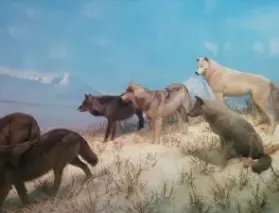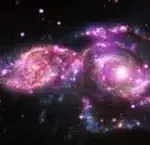Review by DT Strain for the Spiritual Naturalist Society
Waking Up: A Guide to Spirituality Without Religion
by Sam Harris
To be released September 2014
ISBN 978-1-4516-3601-7
Simon & Schuster
 Sam Harris is a neuroscientist and author who is often referred to as a major voice in atheism (though having little use for the word). For many who know of him, perhaps the last thing they might expect to read would be his description of a peace that came over him upon his visit to the location of Jesus’ Sermon on the Mount near the Sea of Galilee. They might be surprised to know that a “blissful stillness” silenced his mind in that moment. What will truly interest many readers is how and why such experiences are not discarded as anathema to Harris’ worldview, but form a fully integrated part of it.
Sam Harris is a neuroscientist and author who is often referred to as a major voice in atheism (though having little use for the word). For many who know of him, perhaps the last thing they might expect to read would be his description of a peace that came over him upon his visit to the location of Jesus’ Sermon on the Mount near the Sea of Galilee. They might be surprised to know that a “blissful stillness” silenced his mind in that moment. What will truly interest many readers is how and why such experiences are not discarded as anathema to Harris’ worldview, but form a fully integrated part of it.
Those who have followed Harris’ work more closely will know that even within the pages of his well-known hit, The End of Faith, Harris’ straightforward attack on the ills of religion contained praise for many contemplative practices, and a call for the secular to better understand and incorporate these. In Waking Up: A Guide to Spirituality Without Religion, Harris finally gets right to the point and lays out what spirituality without the supernatural means, and why it is important.
In doing so, Harris faces many of the same difficulties we at the Spiritual Naturalist Society face – that is, attempting to capture in words on the page that which defies description and demands first-hand experience. Without diminishing the importance of reason, Harris declares that we have a problem achieving happiness that cannot be solved through more conceptual knowledge alone. In so doing, he describes what spiritual naturalist practice is all about.
At one point Harris discusses “spirituality becoming a part of science”. That grammar may have been appropriate for his book, The Moral Landscape, which sought to make ethics become a part of science. However, the ‘first-person practice’ aspect of this book would be better described as science becoming a part of spirituality.
But does he succeed? As with all of us, Harris’ experience is singular, but insightful – even brilliant at times. At other times the reader may have questions about his approach or be left wanting for more, but to demand otherwise might be unreasonable.
With its five chapters and a clarity typical of Harris, Waking Up is an easy read. The first chapter gives Harris’ take on spirituality. The second is called “The Mystery of Consciousness” which goes into brain function and what role these data have in spirituality. In the third chapter, Harris considers the notion of ‘the self’, why it is an illusion, and how we can penetrate that illusion. His fourth chapter is dedicated to meditation, its possible insights, and what kinds he believes are most effective. Chapter five covers some pragmatic concerns about avoiding spirituality scams, cautions and advice on the role of psychedelics, and a few other concerns.
The reader is advised to keep one finger in the end notes, as Harris puts more than just bibliography there. Many of the interesting details and back stories add a great deal. Harris’ personal travels and explorations in the practices he writes about are a big part of the value of this book. He gives a sweeping tour of where and how a naturalist can find relevant wisdom in the East and where one will be less likely to do so.
In the chapter on the nature of consciousness, it was pleasing to see a neuroscientist that fully understands the important distinction between a third-person study of brain function and a first-person exploration of consciousness. He describes the proper realms, limitations, and benefits of both approaches.
There is a rather important section where Harris points out how cognitive scientists and philosophers often mistake pure experience and the sense of “I” with a myriad of other functions of the brain. Those familiar with the positions of philosopher Daniel Dennett and his opponents may find some amusement in the diplomatic and understated way Harris expresses a loss to understand why his friend doesn’t get it.
Harris also touches on some really delicious concepts exemplified by fascinating unusual cases. In one part describing patients with brains where the left and right hemispheres are split, the thought experiments on the nature of consciousness may induce a feeling in readers that they themselves are drawing dangerously close to madness (in a good way). Also, the notes on results of left/right brain anesthesia begin to help one make sense of many experiences and qualities cultivated by spiritual practices.
It was a relief to see the work of philosopher David Chalmers mentioned, who defined the hard problem of consciousness and without whom any talk on this subject would be lacking. It was especially nice to see a reference to Giulio Tononi’s remarkable paper on the Integrated Information Theory (IIT) of consciousness. But it was just as significant when, in his notes, Harris dismantles the theory as an ultimate explanation of consciousness. One of the most brilliant parts of the book is how Harris leads us to the realization that statements like, “consciousness is an emergent property” are meaningless as explanations of consciousness and merely a “placeholder for a miracle”.
With this he returns to the importance of first-person investigation and the ability of a mind to know itself. In one powerful statement, Harris states that nothing in Western religion or science equates to the teachings on the nature of the mind in Buddhism.
Harris describes the nature of Dukkha (suffering, dissatisfaction) and the need for meditation well. As we are often teaching, he indicates that effects of meditation can be far more profound than mere stress-reduction. He provides many good analogies of what mindfulness feels like for the newbie and eloquently describes feelings of boundless love experienced during altered states. While Harris has our sympathies on his plumbing issues, they provide one of the most hilarious parts of the book when he notes how possible it is for a person to experience the opposite of mindfulness (without giving the line away, it involves comparisons to his disposition when coming upon a scene). Harris also provides excellent material on Dzogchen – an advanced form of meditation known for helping the practitioner achieve nondual awareness.
However, it is here that many teachers may have some quibbles with Harris’ prescribed approaches. He admits that the mindfulness and concentration gained in other kinds of meditation may be necessary to succeed at Dzogchen, but he seems to present the impression of someone who regrets the time he spent in other practices before coming to it. It’s not obvious whether he is down on Vipassana or other forms, but he seems at time to suggest skipping directly to Dzogchen meditation. This may short circuit some important skills and realizations of the student and create a shallow understanding. If this is his intention, could it be Harris may be overlooking some of the subtler benefits of prior practices in his own experience? This isn’t entirely clear. The closest he seems to come to acknowledging this concern is noting the possibility a practitioner may try Dzogchen prematurely and think, “so what” but there may be less fortunate possibilities.
Although Harris has some sidebars in which he describes a few practices and techniques, the book is so highly focused on meditation and escaping the illusion of the self, that it seems to ignore a great deal of other important aspects of naturalistic spirituality. Many other spiritual practices and traditions are not touched upon, and there is little in the way of suggesting how one can go about integrating all of this into one’s life in a systematic, consistent manner. It is through this that steady cultivation and transformation can take place over time.
Also less addressed are the insightful aspects of spiritual practice (other than insights into the nature of self). Understanding ourselves and mindfulness can certainly help us get through unhelpful and unpleasant passions of the moment with more equanimity, but the nature of self is really just a subset of the nature of all forms. True wisdom is an internalization of important truths that go beyond this.
Harris does address the outskirts of this, but his message here could be a little unclear for the newcomer. In one area he cautions against drawing conclusions about the nature of the cosmos from inner experience – certainly something with which any spiritual naturalist should agree. But in another area he says that psychedelic trips can convey a depth of awe and understanding that can elude us for a lifetime. Some more clarification of this for skeptics and how it connects to spiritual progress would be ideal.
Harris mentions “looking on the bright side” as an alternate strategy, but it is possible to (a) understand why the ‘bright side’ has some objective truths to it, and (b) condition ourselves to be consistent with those truths inherently at an intuitive/responsive level. Understanding the illusory nature of the self is indispensable, but how can this change the facts of our existence or the fact that we will die? As broader wisdom is accomplished, mindfulness of self and its passions of the moment will be required less often because such pathos will naturally arise less often.
More important are the implications of these other areas for compassion. In his chapter on gurus, Harris notes how freedom from shame and moral constraints is only okay when the practitioner has the best interest of others at heart. Yet it is insight meditation that helps us to conceive of the interconnectedness of all things more intuitively – the deep realization of which is consistent with unattached compassion.
It is this connection between wisdom, transformation, compassion, and meditation that Harris doesn’t address as much. And, it is in that transformation that we find use for ritual, a sense of the sacred, and other kinds of practice in addition to meditation – all of which seem absent in Waking Up.
Especially glaring is the absence of the ancient Greek traditions. While contrasts are drawn between Eastern thought and Abrahamic religion, some Greek schools of philosophy are so close to Buddhism in the kinds of practical approaches they advocate that some scholars study the cross cultural influences that may have taken place. Significantly, some of these philosophies even seem to handle a few things as powerfully as Buddhist techniques, or more so. For example, Harris brings up the conundrum of nonattachment versus conformity and political quietism, which is answered by ancient Stoicism and its integration of virtue even while providing impressive methods for facing reality with equanimity (highly influencing modern therapeutic techniques). Stoics also believed that false judgments were the source of our suffering, and their approach to this is also very effective at ‘waking up’. But even though he quotes Stoic philosopher Epictetus on how our thoughts about an experience determine our feelings, Harris claims the insights and methods of Pyrrho “never became a part of any system of thought in the West” (Stoicism, Skepticism, Epicureanism included his influence and had profound impacts on the West).
Yet, these criticisms may be unfair, as one can hardly expect Harris’ book to encompass the entire world of naturalistic spirituality and, indeed, this was very likely not the aim. As an introduction to some of the most important and core aspects newcomer skeptics may seek to have addressed, the book is excellent.
In the last chapter, Harris gives us some sober and important advice on seeking spiritual teachers and not buying into nonsense. He rightly denounces goofy appeals to quantum mechanics as failed attempts to find the proper intersection of science and spirituality. However, the book as a whole may still be too distracted by efforts to discredit religion to be considered fully focused on spiritual practice. If you can imagine how infrequently the beliefs of Mormons are mentioned in a Buddhist temple, you can understand how different are the two endeavors of spiritual teaching and religious criticism. One may get the impression that, given the likely audience, Harris may feel (justifiably) that there is a need to establish credibility as a level-headed rationalist, even for someone who has already so clearly demonstrated that in other works.
Harris clearly shares our organization’s view on spirituality as being entirely consistent with rationality and a modern scientific worldview, as well as its importance and benefits. At certain times in the book, as he is talking about the fleeting nature of mere pleasure for example, one sees pages that could be transplanted into many of the Dalai Lama’s popular books without notice. But Harris’ fans are much more likely to listen to Harris, which underscores the importance of this book.
In emphasizing the significance of our conscious experience, Harris states that consciousness is the one thing in this universe that cannot be an illusion and to this we can only cheer, bravo! While this book leaves many things to be addressed, this cannot be a criticism of Waking Up, as its goal was surely more targeted. Sam Harris’ experience is not the complete story of spiritual naturalism, but his personal spiritual background, field of expertise, place in popular media, and talent as a writer puts Harris in the ideal position to bridge the gap between the scientifically minded skeptic and a world of spirituality without compromising intellectual integrity. The Spiritual Naturalist Society highly recommends Waking Up as a greatly helpful introduction and refresher to spiritual thought for naturalists.
Subscribe to The Spiritual Naturalist Society
Learn about Membership in the Spiritual Naturalist Society
__________
The Spiritual Naturalist Society works to spread awareness of spiritual naturalism as a way of life, develop its thought and practice, and help bring together like-minded practitioners in fellowship.













